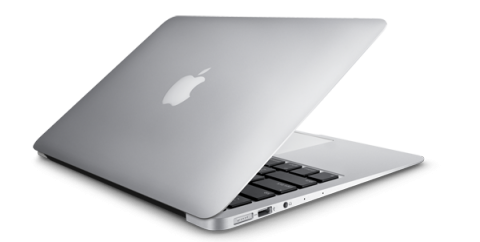
From someone who enjoys both OS X and Windows 7 (and now 8), deciding on an Ultrabook is no easy decision. I want a device I can toss in my backpack, hop on the train and be able to surf the web with the full desktop experience. I need to be able to run graphic intensive programs, have multiple web browsers open, and quick response times when I navigate between programs. My requirements summon a machine with a full operating system, a physical keyboard and excellent battery life. While an iPad or flagship Android tablet is great for quick tasks and entertainment, you really can’t be productive on those type of devices.
A few years ago I thought the Macbook Air was "cute," but I still preferred my stocky Macbook Pro with its generous 15" screen. It's not until I moved to a city (good ol' Philadelphia!) and needed to be very mobile when I realized how much this clunker was slowing me down. My backpack was heavy and the laptop with its charger took up too much space -- not enough room for my gym clothes! An Ultrabook would solve my problems!
First, let me say I'm open minded when it comes to hardware and software, so I have both Apple and Microsoft software/devices at home. My decision came down to the Macbook Air and the Dell XPS 13, both base models starting at $999 each. I was leaning toward the XPS 13 since I’ve been using Mac laptops for several years and it was becoming stale; I've also been enjoying Windows 7 on a newer desktop computer I built. Its selling point was the 13" Corning Gorilla Glass screen that squeezes itself into just about the same size footprint of the 11" Macbook Air. The glass used on the Dell device is popular in smartphones and resists scratching, a great idea from Dell’s design team. I was almost certain the lightweight and sleek looking XPS was going to be my next laptop.
Then I took a trip to the store to compare the designs side by side…
Playing with the XPS 13, I was disappointed by the screen - it had a narrow viewing angle and was too dim at its brightest setting. The exterior design was amazing compared to Dell’s previous laptops, but it had a cheap black matte finish surrounding the keyboard and track pad. The surface of the matte area was fading from others testing it, which is a design flaw I would have expected to see from several years ago; however, the bottom of the frame consisted of an awesome carbon fiber design! I’m not sure why they didn’t utilize this material throughout the design, where people would actually see it.
Next, I tried the Macbook Air. The 11.6" screen was small, yet functional, but I couldn't imagine spending extended periods of time on it. Unfortunately, the Air’s design seemed it could fit a larger screen because there’s plenty of space around the display. Despite the smaller screen of the Air, it was brighter and more vibrant than the XPS, a huge advantage in real world use.
The weight of the two devices are comparable with the air weighing in at 2.38 pounds and the XPS at 2.99 pounds. The Air's design felt noticeably lighter and was easier to grasp. The XPS lacked a durable feel when compared to the Air's tapered unibody design. If you’re on the go all the time, it would seem the Air would be able to take more abuse.
The winner for me was the Macbook Air. I really wanted to like the Dell more, but the bright display and sleekness of the Air is truly what sold me on it. You will get more hard drive space with the XPS, but the Air had plenty for my needs. Either way you can’t go wrong with either of these machines; I suggest checking them both out in person first if you plan to buy one online.